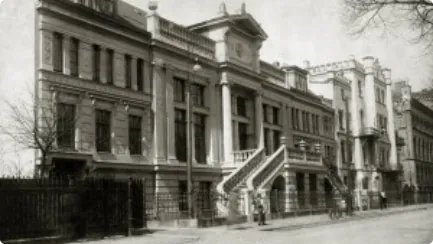Establishment and activities of the RLS Museum (1869–1919)
The Riga Latvian Society (RLS), founded in 1868, included several cultural-educational commissions. In 1869, the RLS Science Commission was established; it was active in collecting ethnographic data and founded a museum – the predecessor of the LNMH.
The RLS Science Commission first helped other institutions to collect exhibits and did not keep the collected items. Among the first partners was the Imperial Society of Natural Sciences, Anthropology and Ethnography of Moscow University (1869) and the Moscow Polytechnic Exhibition (1872). In 1875, however, the Natural History Branch of the RLS Science Commission decided to establish an independent museum under its auspices and began to build a universal collection, which included geological, botanical and zoological materials, as well as archaeological artefacts and items of traditional culture (ethnography), coins, medals, as well as historical artefacts. In 1877, the lawyer and publicist Alexander Weber (1848-1910) was appointed the first administrator of the Museum.
In 1887–1888, it was decided to narrow down the thematic scope of the museum and to primarily focus on Latvian ethnography and history in order to have a museum specifically about Latvians. The first short-term exhibition of the Latvian Museum ethnographic collection was held in the RLS in 1890.
A turning point in the museum’s development was the Latvian Ethnographic Exhibition in 1896. It was an extensive open-air exhibition by the Riga Canal with purpose-built pavilions and reconstructions of historical buildings. In preparation for it since 1894, expeditions were organised to various regions collecting more than 6,000 items. This exhibition, which showcased the traditional Latvian way of living and the 19th-century achievements, was a great success, attracting 45,000 visitors.
In 1903, the RLS bought a new building on Pauluči Street (now Merķeļa Street), with some of the rooms reserved also for the museum. The new permanent exhibition opened in 1905. In 1914, the construction began of a museum’s building on Pushkin (now Kronvalda) Boulevard began. It was designed by architect Eižens Laube. The project was based on donations and was interrupted by World War I.
